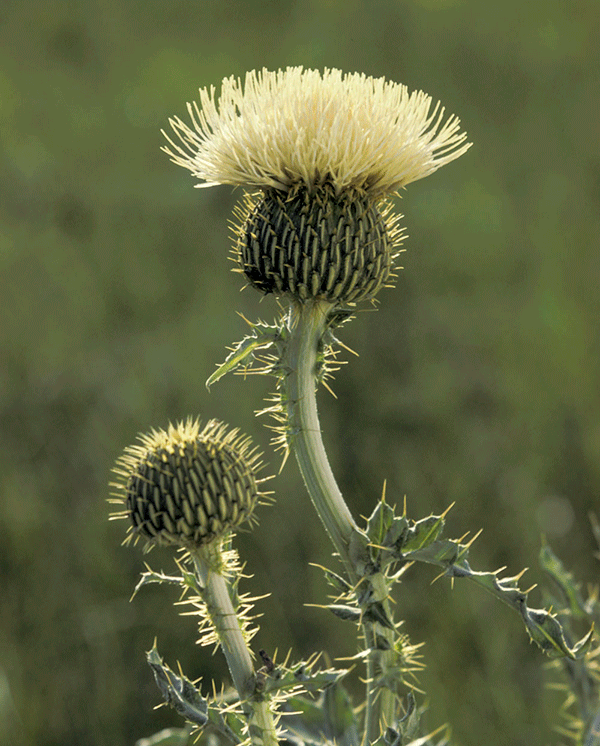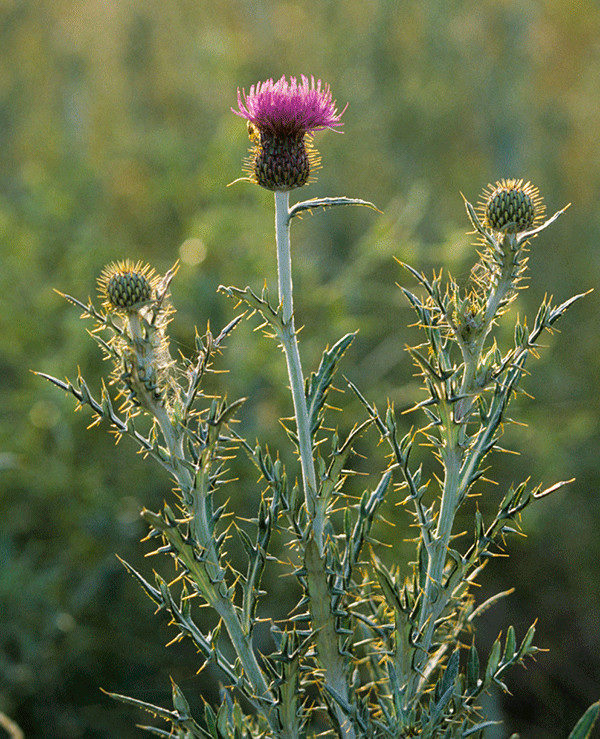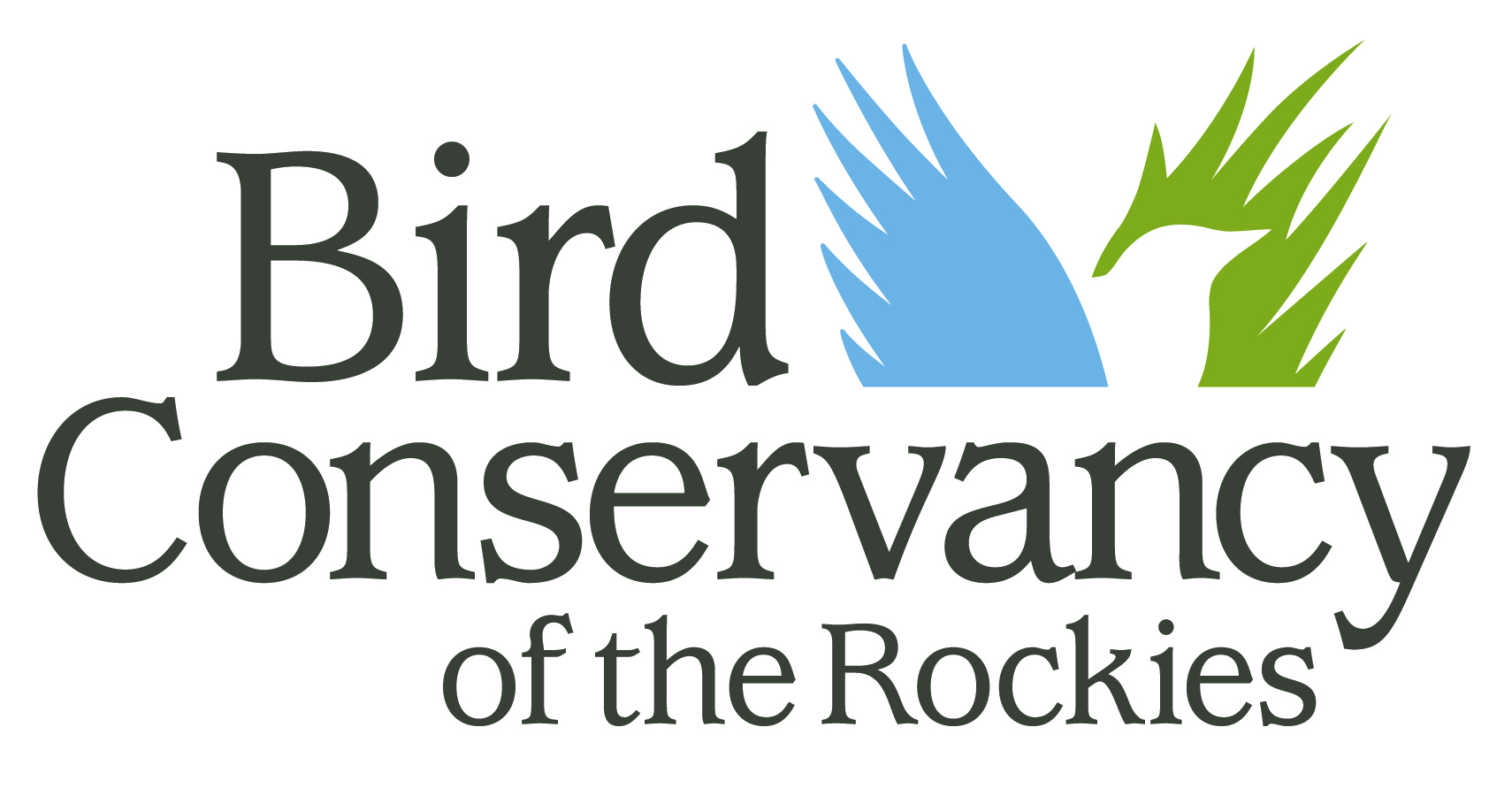Thistles. Those pink or purple flowered prickly plants in the sunflower family (Asteraceae) that tend to evoke feelings of antagonism and strong dislike. Culturally we really just don't like thistles. In the case of invasive non-native invasive thistles, the dislike makes sense. The spread of non-native thistles presents environmental and agricultural problems that people expend great effort to address.
 Platte Thistle at Big Alkali Lake, Cherry County. Image from NEBRASKAland Magazine/Nebraska Game and Parks Commission.
Platte Thistle at Big Alkali Lake, Cherry County. Image from NEBRASKAland Magazine/Nebraska Game and Parks Commission.Unfortunately, some of that effort may be unnecessary since it is often directed at eradicating all thistles indiscriminately. Our native thistles tend to get a bad reputation right along with the non-natives even though native thistles do not typically exhibit the same invasive, weedy tendencies. In reality, native thistles are a group of wildflowers that are just as much a part of prairie ecosystems as more well-loved groups of wildflowers like coneflowers, penstemons, or prairie clovers.
A lot of information is available about the need to get rid of invasive thistles and how to do it. This article focuses on why we should keep native thistles around and start thinking of them as "wildflowers" rather than "weeds".
Thistle Identification
Telling thistle species apart can be difficult. To the best of my knowledge, there are no fully reliable physical characteristics to distinguish all native thistles from non-native thistles, but in general, native thistles tend to be less spiny with the spines more localized on leaf margins. Many native thistles also have thick, white hairs on the underside of leaves, giving the leaves a two-toned appearance; light on bottom, darker on top. Most of the non-natives have hairless or sparsely haired leaves. Native thistles are usually found as single plants or in small clumps rather than the expansive stands often formed by non-native thistles. Occasionally, in disturbed sites, native thistles such as Flodman's thistle, can form localized stands, but are less likely to expand than non-native thistles.
 Yellowspine Thistle. Image from NEBRASKAland Magazine/Nebraska Game and Parks Commission.
Yellowspine Thistle. Image from NEBRASKAland Magazine/Nebraska Game and Parks Commission.We have 10 species of thistle in Nebraska, 5 native (tall, Platte, Flodman's, yellowspine, and wavyleaf) and 5 non-native (plumeless, musk, Canada, bull, and Scotch).
The Value of Native Thistles
Native thistles provide highly valuable food resources for a wide variety of insects, including: honey bees, bumble bees, long horned bees, leafcutter bees, sweat bees, syrphid flies, butterflies, hawk moths, soldier beetles, leaf beetles, scarab beetles, and parasitoid wasps. This food source is increasingly important as many of our pollinating insect populations are in decline. The large flower heads and flower density of many native thistles encourages greater visitation by pollinators. Native thistles also provide nesting sites for cavity nesting bees, which are known to use the stalks of thistles.
Thistles are also an important resource for native herbivorous insects that feed on their leaves, stems, and flowers. Many of these herbivorous insects that feed on native thistles also feed on non-native thistles and may help suppress thistle invasions. Native herbivorous insects can do the most damage to invasive thistles when both the native and non-native thistle have similar growth and bloom periods.
For example, non-native bull thistle and native tall thistle share over 80% of their herbivore community. Populations of native thistles can act as a reservoir of these insect herbivores and help suppress invasions of non-native thistles.
Native thistles provide food for songbirds such as American goldfinch, indigo bunting, pine siskin, dark-eyed junco, several species of sparrow, and ruby-throated hummingbird. Small mammals such as thirteen-lined ground squirrels, mice, rabbits, and moles also feed on thistles.
The next time you jump on your ATV to address noxious and invasive vegetation on your property please give some thought to which thistle you target and which ones you leave.
Did you know?
- A thistle is the national emblem of Scotland. Legend has it that at some point during a 13th century invasion, Norsemen tried to surprise sleeping Scottish Clansmen by sneaking up on bare feet. As they crept barefoot, they came across an area of ground covered in thistles. One of the Norsemen unfortunately stepped on a thistle and shrieked out in pain, thus alerting the Clansmen to the advancing Norsemen. The Scots defeated the Norsemen at what is known as the Battle of Largs, and saved Scotland from invasion.
- Many species of thistles have edible roots, inner stems, young leaves, young inner parts of flower buds and seeds.
- Goldfinches are among the strictest vegetarians in the bird world, selecting an entirely vegetable diet and only inadvertently swallowing an occasional insect.
- Contrary to the name, Canada thistle did not come into the U.S. from our northern neighbor, but rather was introduced in the 17th century from the Mediterranean region and southeast Europe. Tea made from Canada thistle leaves has been used as a diuretic as well as for treatment of tuberculosis.
- Cattle can be trained to eat Canada thistle and other weeds. Learn more at: http://www.livestockforlandscapes.com/about.htm

